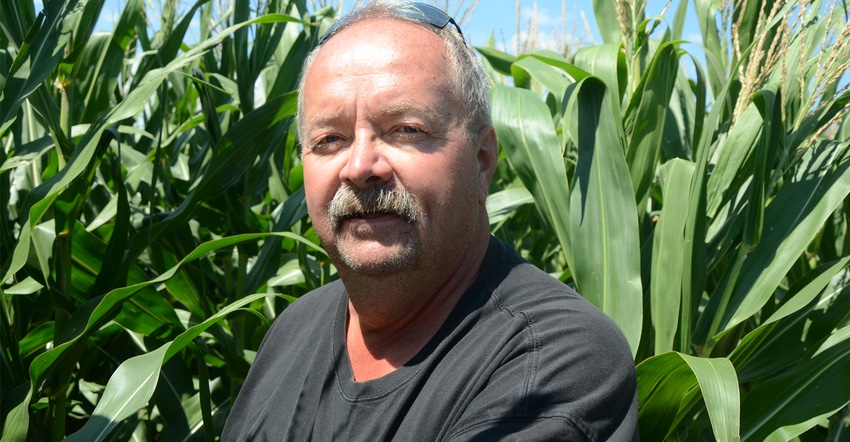August 16, 2018

By Roric Paulman
About two-thirds of the Ogallala Aquifer underlies the state of Nebraska, and it goes without saying that water plays a critical role in Nebraska and the High Plains. As we look to the future of agriculture and the aquifer, what strategies can be employed to use water in the most economical, sustainable way possible?
In the past 30 years since I first joined the Nebraska LEAD program as part of LEAD Class 7, we’ve come a long way on how we view and use water.
Back in the late 1970s, center-pivot irrigation was still relatively young. At that point, much of the focus was on reliable irrigation equipment that could consistently deliver water across an entire field. Times have changed.
Over the years, irrigation tech has evolved from a basic tool to meet crop water demands to an integral tool in managing a given crop. For most irrigators in Nebraska, water is the least-limiting factor in production. We have a reliable supply and equipment to deliver that water.
However, when it comes to the adoption and use of technology to enhance irrigation decisions, we're still in the infancy stages. The next step is to take adoption beyond early innovators to the bulk of irrigators. This group will be the one to tweak the technology and make it best work for a production ag environment.
The question is: How do we reach this group? Whatever the tech in question, there has to be a return on investment, and it has to be easy to use — or “plug and play” so to speak. But as producers evaluate new tools and tech for ROI, shouldn’t we also evaluate the return on investment for our natural resources? The two are more closely related than you might think.
Case in point: In the last two weeks of July, our farm received approximately 2.4 inches of rain —much more than the historic average. With cooler temperatures in late July, our evapotranspiration (ET) rates have not exceeded rainfall — a rarity for this time of year in western Nebraska. So, we had more water available to carry the corn crop through the first couple weeks of August.
As a result, we saved a pass of the center pivot, reducing the amount of water pumped, and the amount of energy used to pump and apply that water, without hurting yields. This July, we paid about one-tenth of our usual fuel bill, thanks to these timely rains. However, most importantly, we knew we could do this because we had access to soil moisture, ET and rainfall data.
How do we get others to this point? It starts with trust. And to establish trust, it takes experience with the technology and an understanding of historical trends on a given field. You also have to be willing to manage your irrigation at a higher level.
Getting others to look more closely at these tools will take looking at water as a currency.
Instead of offering cost-share as an incentive for tech adoption, we could offer another incentive: starting irrigators off with a baseline allocation of zero inches of water, and allow them to work their way up, allocating more water as they adopt strategies and tech to use that water more effectively.
For example, starting with the basics and measuring withdrawals or diversions through flowmeters (already mandated in most of Nebraska) might take the allocation up to 6 inches. Installing a telemetry system might add another 2 inches. The more technology you use to monitor water use, the more inches you add to your allocation. This technology could be accompanied by educational workshops on using the technology to improve decision-making, which would add even more inches to participants' allocations, while putting them on the path to better water stewardship.
Nebraska is blessed with a reliable source of water in the Ogallala Aquifer and access to irrigation as the No. 1 irrigated state in the nation. In a state where 1 out of 4 people are employed in an ag-related job, many stakeholders are invested in the economic viability of the ag sector. It makes sense that Nebraska should lead the way.
The consumer wants to know what we’re doing and how we’re doing it. It can be a tough reality to accept, but why wouldn’t we take it upon ourselves to tell our own story and capitalizing on it? Through an educational process like this, we could provide natural resources districts, university Extension specialists and educators, and state officials with hard data to verify that Nebraska irrigators are good stewards of our resource — all while improving ROI and driving technology adoption. Then, we will be acting like the No. 1 irrigated state in the nation.
Paulman is a member of LEAD Class 7 and board chair of the Nebraska Water Balance Alliance. He and his wife, Deb, live near Sutherland, where he and son Zach raise several different irrigated crops and use a host of precision irrigation technologies.
You May Also Like




